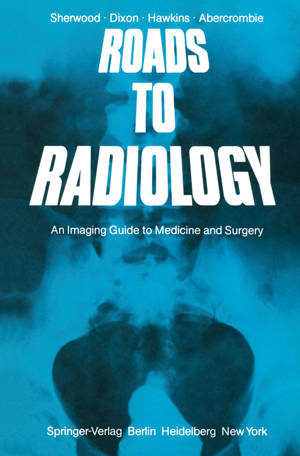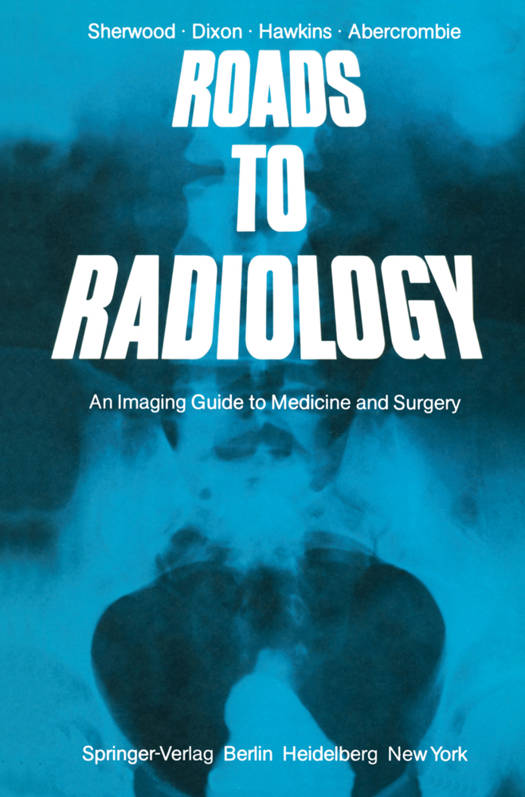
- Afhalen na 1 uur in een winkel met voorraad
- Gratis thuislevering in België vanaf € 30
- Ruim aanbod met 7 miljoen producten
- Afhalen na 1 uur in een winkel met voorraad
- Gratis thuislevering in België vanaf € 30
- Ruim aanbod met 7 miljoen producten
Zoeken
Roads to Radiology
An Imaging Guide to Medicine and Surgery
T Sherwood, A K Dixon, D Hawkins, M L J Abercrombie
Paperback | Engels
€ 83,95
+ 167 punten
Omschrijving
Our pocket-book has come about as a direct attempt to answer the needs of our clinical students. We have tried to use radiology as a magic window for looking at their patients' medical and surgical problems. The book is very simple and highly selective. A number of excellent introductory texts already exist for students seeking comprehensive and balanced accounts of radiology as a specialty. We have tried to keep close to our title: a good guide shows you a bare outline of where you might go, and makes sure you see the highlights. He will point to interesting places that deserve study, without going into them himself. Occasionally he may enlarge on a topic when the information is not readily available anywhere else (as in our chapter on the skull). And he will be ready to listen to students asking, perhaps rather shyly, some basic questions (as in our first and last chapters). We have taken Voltaire as our own guide: "Le secret d'ennuyer est . . . de tout dire". The book has been written by only a small group of all those teaching radiology at Cambridge. We wish to absolve our colleagues from all blame, and to thank them for generous support, especially in the loan of illustrations. Cambridge, 1982 Thomas Sherwood Contents 1. Introduction: Medicine and Radiology Thomas Sherwood. . . . . . . . . . . . . . . . . . . . . . . . . . . . . . . . . . . . . . . . . . . . . . . 1 2. Diagnosis Thomas Sherwood. . . . . . . . . . . . . . . . . . . . . . . . . . . . . . . . . . . . . . . . . . . . . . . 9 Looking at an x-ray. . . . . . . . . . . . . . . . . . . . . . . . . . . . . . . . . . . . . . . 10 Diagnostic pathways . . . . . . . . . . . . . . . . . . . . . . . . . . . . . . . . . . . . . 11 Sensitivity and specificity of tests . . . . . . . . . . . . . . . . . . . . . 14 Conclusion . . . . . . . . . . . . . . . . . . . . . . . . . . . . . . . . . . . . . . . . . . . . . . . . . 17 References . . . . . . . . . . . . . . . . . . . . . . . . . . . . . . . . . . . . . . . . . . . . . . . . . 17 3. Bones Thomas Sherwood. . . . . . . . . . . . . . . . . . . . . . . . . . . . . . . . . . . . . . . . . . . . . . .
Specificaties
Betrokkenen
- Auteur(s):
- Uitgeverij:
Inhoud
- Aantal bladzijden:
- 96
- Taal:
- Engels
Eigenschappen
- Productcode (EAN):
- 9783540118015
- Verschijningsdatum:
- 1/12/1982
- Uitvoering:
- Paperback
- Formaat:
- Trade paperback (VS)
- Afmetingen:
- 156 mm x 234 mm
- Gewicht:
- 163 g

Alleen bij Standaard Boekhandel
+ 167 punten op je klantenkaart van Standaard Boekhandel
Beoordelingen
We publiceren alleen reviews die voldoen aan de voorwaarden voor reviews. Bekijk onze voorwaarden voor reviews.











